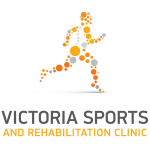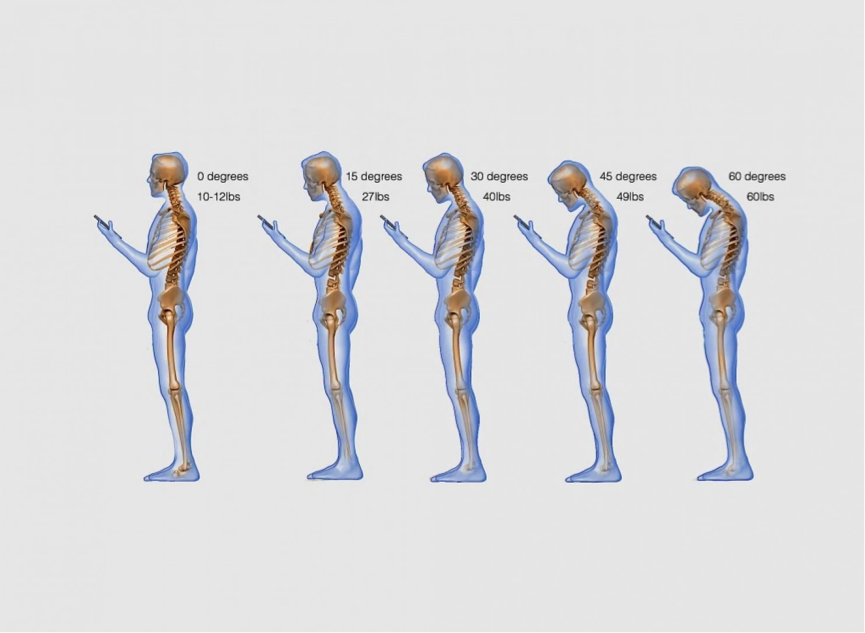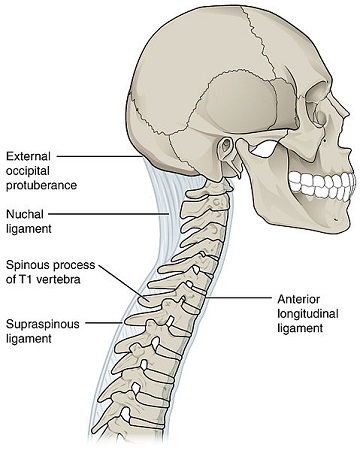There has been a number of buzz words in the health space over the last few years. Not long ago everyone was talking about ‘Sitting is the New Smoking’ and this drove a large uptake of stand up desks into the work place.
The last 12 months has seen ‘Text Neck’ take over. So, what exactly is ‘Text Neck’? Basically, it is a sore neck from regular use of mobile technology. As we use our mobile phones to help perform more and more of our daily tasks and routines, the more time we spend with our head down looking at these devices. As the saying ‘Sitting is the New Smoking’ alerted us to the dangers of sitting in front of our computers for too long, ‘Text Neck’ is doing the same for our posture when using our mobile phone.
When we are holding our head up straight it weighs on average 4.5 – 5.5 kg (10-12 pounds). When we bend our head forward, the stress is transferred directly to the muscles and ligaments in our neck and upper back. The further you bend your head forward, the relative weight of the head changes as it places increased stress on the posterior structures of the spine (ligaments, muscles, nerves).
At 60 degrees our head relatively weighs 27 kg (60 pounds), so that is an extra 21.5 – 22.5 kg. That is the equivalent of having a 6 year old child hanging around your neck.
People on average, especially younger generations are spending between 2 – 4 hours per day on their phone. This equates to an extra 730-1460 hours per year that we are putting additional stress on our necks and upper backs that we weren’t doing a decade ago.
I have started to see an increase in patients especially in the younger age groups presenting with neck and upper back pain, which can be attributed to overuse of mobile devices. I have also seen injury to a number of structures in the spine that you would rarely see, such as ligament nuchae and supraspinous ligament, which are the ligaments that run between the spinous processes of each vertebrae. It is these ligaments that are overloaded and stretched when we are using our mobile technology.
So what can we learn? Like you would pay attention to your posture when you are using a computer you need to do the same when using your mobile phone or tablet. Also reducing the time spent using your mobile phone for tasks other than talking on it will help reduce the likelihood of suffering upper back and neck pain.
This article is for information only, for a diagnosis and treatment of a musculoskeletal condition consult your Osteopath or primary healthcare professional.


